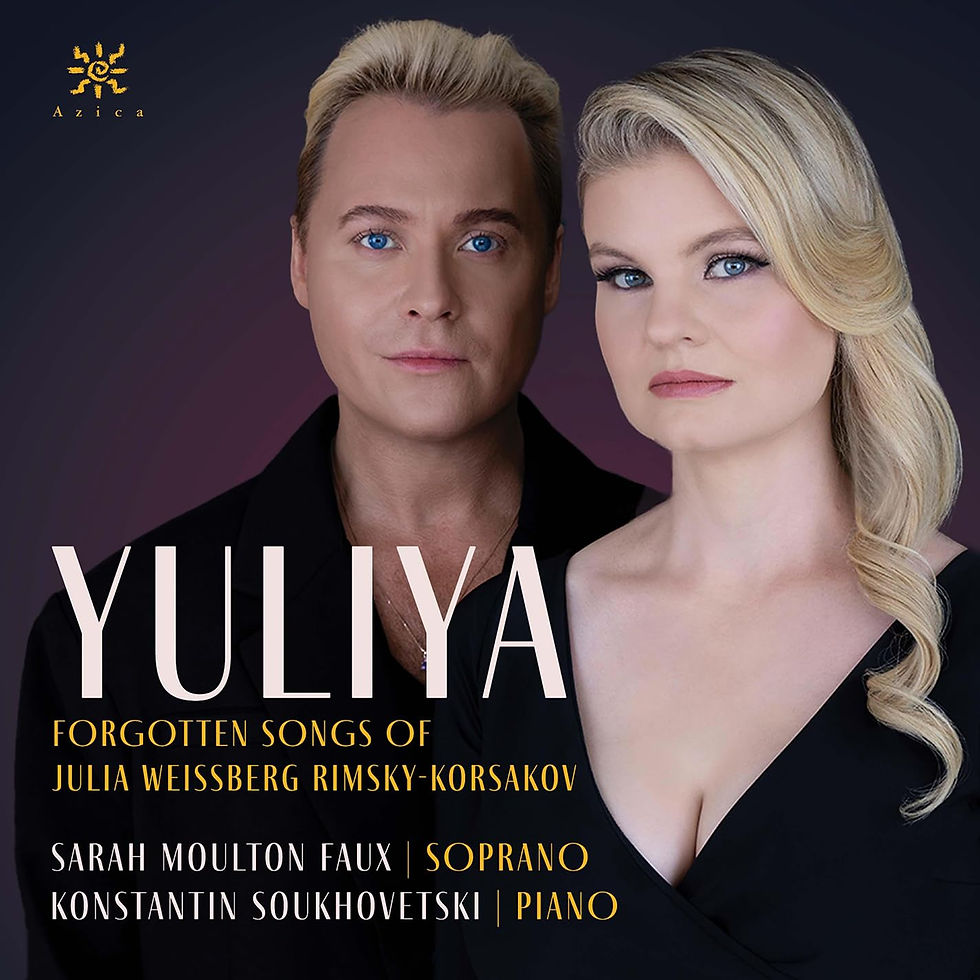Christopher Rouse’s Requiem at Carnegie Hall
- Apr 29, 2014
- 4 min read
Updated: Jun 18, 2020

Photo Credit: Chris Lee for the New York Times
The innovative series Spring for Music presents unusual programs for one-evening-only performances by visiting North American Orchestras, realizing, as Alan Gilbert puts it: “A week-long celebration of what symphonic music can bring to all our lives.”
Requiem’s New York premiere comprises the evening’s entire 90-minute concert program; Alan Gilbert will lead the New York Philharmonic through Rouse’s tour de force, alongside baritone Jaques Imbrailo, the Westminster Symphonic Chorus directed by Joe Miller, and the Brooklyn Youth Chorus directed by Dianne Berkun-Menaker. Christopher Rouse himself describes Requiem as “unquestionably, [his] magnum opus.” The work was commissioned by Soli Deo Gloria under its Founding Artistic Director, Grammy award-winning conductor John Nelson, in honor of the 2003 Hector Berlioz bicentennial, and Rouse completed the piece while attending the 2002 Aspen Music Festival in Colorado. The internationally operating institution Soli Deo Gloria is recognized for its worldwide sponsorship of sacred music concerts, presenting opulent choral/orchestral arrangements and idiosyncratic commissions since 1996. Nelson and Rouse had met and worked together in 1985, and bonded in particular over their shared love for Berlioz, to whose work Rouse feels especially connected. He says: “If I had to choose one of all his wonderful masterpieces as my island work, it would have to be, objectively speaking, his Damnation of Faust.” Despite his profound admiration and intimate respect for Berlioz’ strong sense of harmony, rhythm, and orchestration, Rouse, in his requiem, refrained from referencing Berlioz’ own “mighty and most stupendous and unique example of the genre,” as he describes it. “I did not use any direct quotes. I did, however, follow him in placing the text where he had set it, refashioning the Latin, and using the same separations.” Like Berlioz, Rouse adapted the Latin text liturgically read at the Requiem Mass for the Dead, interspersing it, like Berlioz, with poetry in a variety of languages, and restricting the Latin liturgical text to the chorus. This structure achieves an artistic transformation from the source material’s liturgical use, conveying the theme of death on different levels of experience: through the Baritone’s voice, heard on a personal level, and through the chorus, portraying the philosophical idea of mortality as it applies to all mankind. Rouse prefers not to analyze meaning in music to the point where the listener closes his or her mind to the experience. After all, the purpose of music for Rouse, as he explained in an interview with Bruce Duffie, is “to convey something meaningful, nourishing, and enlightening for the human spirit that speaks of the creator of the work to the listener…and how you organize your material is really just a means of making that expressive or emotive meaning coherent, more logical.”
In the case of Requiem, his own work by which he “wants to stand or fall,” he followed some of Berlioz’ emotional concepts, expressed in the music, but some he created in exact opposition, for example, “in Berlioz’ opening section of the Dies irae, there is this serenity, austere mood – in mine, all hell is breaking loose,” he says. Given the fact that Requiem was composed in the aftermath of 9/11, an interesting fact, especially for New Yorkers, is that although there is a minor reference to 9/11, Rouse’s hope with this work is to provide a more general source of solace, a more “Schumanesque approach,” as he puts it, and in terms of the religious aspect, he says: “The use of poetry would preclude the score from its liturgical use and staying away from any symbolic characteristic of some ‘byzantine icon.’” Rouse, whose work has been performed internationally since the mid-eighties, is after “the hyper and expressive urgency of the emotional experience, a musical answer to the cry of anguish, the shriek of universal agony.” His Requiem was coined: “The first great traditional American Requiem,” and praised as “an extraordinary score” by the Los Angeles Times upon its 2007 performance by the Los Angeles Master Chorale.Photo Credit : Christian Steiner
In 2012, Rouse

was offered the position as composer-in-residence with the New York Philharmonic’s Marie-Josée Kravis program, which began under Alan Gilbert’s leadership in 2009 with composer Magnus Lindberg’s three-year residency; the program was just recently extended to incorporate Rouse’s third and last year of collaboration with the orchestra into the 2014/15 season. “We inspire each other,” says Rouse. Gilbert follows: “There was just more work to do.” Rouse’s collaboration with the orchestra began in 1984 with a performance of his work The Infernal Machine, conducted by Leonard Slatkin, marking a sort of breakthrough in his career. In October 2014, the world premiere of Rouse’s new work: Thunderstuck, a rock-inspired Philharmonic-commissioned orchestral work, will be performed under Gilbert’s baton, bringing his experience with the New York Philharmonic full-circle. Rouse, not an instrumentalist himself, knew even as a six year-old boy, listening to a recording of Beethoven’s 5th Symphony that his mother had put on, that writing music was what he was born to do. Growing up with Rock n’ Roll rather than with Jazz, like George Crumb, one of his most influential teachers, Rouse feels naturally connected to the music of his youth. Thunderstuck pays homage to the idiom of some of his Rock favorites, like The Byrds, Jefferson Airplane, Chicago, naturally absorbing the stylistically variant soundscapes of his ‘coming of age’ time. For the moment, though, Rouse is already working on the last movement of an organ concerto for organist Paul Jacobs, co-commissioned by several orchestras including the Philadelphia Orchestra and the National Symphony Orchestra. The May 5th concert will be broadcast live from Carnegie Hall on WQXR, hosted by Elliott Forrest and David Garland, and will be available for on-demand listening and streaming on wqxr.org. Ilona Oltuski -GetClassical



Comments